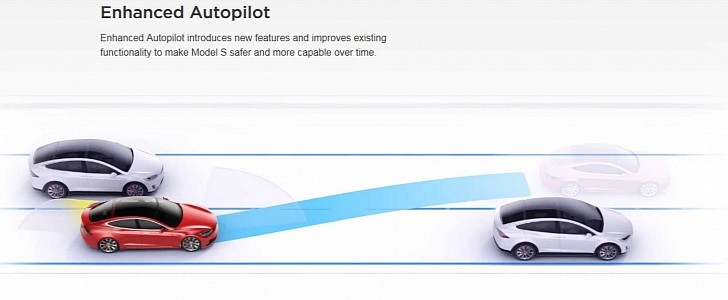In February, the National Highway Traffic Safety Administration (NHTSA) opened a preliminary evaluation (PE) about something so familiar in Tesla vehicles that its customers even gave it a name: phantom braking. At the time, the agency said it had 354 complaints. On May 4, NHTSA asked Tesla for more information: it now has 758 complaints.
If that was not enough, the Wall Street Journal (WSJ) discovered that the safety regulator would also release information on crashes involving driving assistance technologies. NHTSA said it wanted to offer more transparency on crashes involving new ADAS (advanced driver-assistance systems). Not by chance, two of the most famous ones available are Autopilot and FSD (Full Self-Driving), both offered by Tesla vehicles.
The EV maker claims these systems make driving safer. Despite that, at least three fatal crashes involved the use of Autopilot. Tesla blamed the drivers for trusting the system more than they should, as it warns in its legal disclaimer. Philip Koopman called that a moral crumple zone. Elon Musk used to say that there were no crashes involving FSD. After at least three incidents, Tesla advocates changed its defense to “nobody died using it.”
Suppose NHTSA really discloses the information on ADAS crashes this month. In that case, we’ll finally have an official picture of what these systems are doing without having to count on what the media manages to learn. The good news is that the safety agency seems to be going deeper into the possible causes of these crashes.
When it comes to Autopilot, the letter NHTSA sent Tesla asks for many more details than the PE started with. According to Associated Press, the safety regulator wants to know the initial speed of when the EVs began to brake, final velocity, average deceleration, if the cars detected obstacles that justified the car braking, and videos of the events.
NHTSA also wants to know how Tesla vehicles detect metal bridges, oncoming and cross traffic, s-shaped curves, how Autopilot is able to classify cars of different sizes, the owner’s names, and how Tesla fixed those cars presenting phantom braking – and if it did. Among these names, we should see Steve Wozniak, who complained about hundreds of phantom braking episodes before he finally sold his Tesla and bought a Lucid Air.
The most crucial part of the letter is probably the one in which NHTSA wants to understand how Teslas deal with reflections, glare, and shadows. The safety agency also wants to know how the EV maker prevents issues when snow or heavy rain blocks cameras. Tesla stopped selling its vehicles with radars and decided to rely solely on cameras, a system that the company calls Tesla Vision. We do not doubt the NHTSA will ask why.
The EV maker claims these systems make driving safer. Despite that, at least three fatal crashes involved the use of Autopilot. Tesla blamed the drivers for trusting the system more than they should, as it warns in its legal disclaimer. Philip Koopman called that a moral crumple zone. Elon Musk used to say that there were no crashes involving FSD. After at least three incidents, Tesla advocates changed its defense to “nobody died using it.”
Suppose NHTSA really discloses the information on ADAS crashes this month. In that case, we’ll finally have an official picture of what these systems are doing without having to count on what the media manages to learn. The good news is that the safety agency seems to be going deeper into the possible causes of these crashes.
When it comes to Autopilot, the letter NHTSA sent Tesla asks for many more details than the PE started with. According to Associated Press, the safety regulator wants to know the initial speed of when the EVs began to brake, final velocity, average deceleration, if the cars detected obstacles that justified the car braking, and videos of the events.
NHTSA also wants to know how Tesla vehicles detect metal bridges, oncoming and cross traffic, s-shaped curves, how Autopilot is able to classify cars of different sizes, the owner’s names, and how Tesla fixed those cars presenting phantom braking – and if it did. Among these names, we should see Steve Wozniak, who complained about hundreds of phantom braking episodes before he finally sold his Tesla and bought a Lucid Air.
The most crucial part of the letter is probably the one in which NHTSA wants to understand how Teslas deal with reflections, glare, and shadows. The safety agency also wants to know how the EV maker prevents issues when snow or heavy rain blocks cameras. Tesla stopped selling its vehicles with radars and decided to rely solely on cameras, a system that the company calls Tesla Vision. We do not doubt the NHTSA will ask why.








